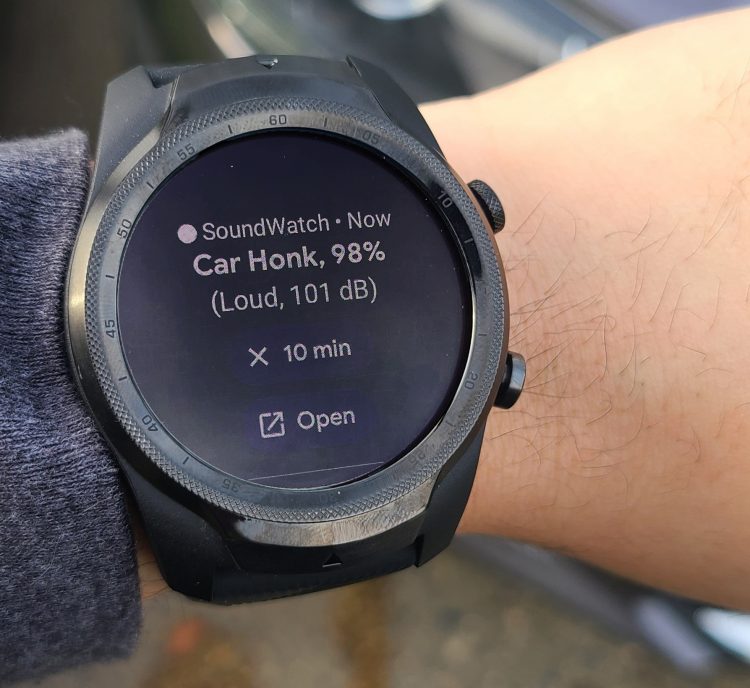Mobile and desktop apps have become a key feature of everyday life, with apps for banking, work, entertainment, communication, transportation, and education, to name a few. But many apps remain inaccessible to people with disabilities who use screen readers or other assistive technologies.
Since these findings were published in 2022 by then-Ph.D. student Anne Spencer Ross, CREATE researchers have been working to support automated diagnosis and repair of mobile app accessibility failures for all mobile apps. CREATE faculty are exploring aspects of desktop app accessibility, such as creating better touch screens based on how people with disabilities actually interact and developing Pointing Magnifier, a desktop pointing aid that makes the mouse easier to use for people with limited fine motor function. Ga11y creates GIF annotations and improving the accessibility of animated GIFs. VoxLens is a JavaScript plugin that allows people to interact with visualizations. Visualization designers need only to add a single line of code to implement.
Ga11y improves accessibility of automated GIFs for visually impaired users

Animated GIFs, prevalent in social media, texting platforms and websites, often lack adequate alt-text descriptions, resulting in inaccessible GIFs for blind or low-vision (BLV) users and the loss of meaning, context, and nuance in what they read. In an article published in the Proceedings of the ACM Conference on Human Factors in Computing Systems (CHI ’22), a research team led by CREATE Co-director Jacob O. Wobbrock has demonstrated a system called Ga11y (pronounced “galley”) for creating GIF annotations and improving the accessibility of animated GIFs.
Wobbrock team’s VoxLens allows screen-reader users to interact with data visualizations

Working with screen-reader users, CREATE Ph.D. graduate Ather Sharif and Co-Director Jacob O. Wobbrock, along with other UW researchers, have designed VoxLens, a JavaScript plugin that allows people to interact with visualizations. To implement VoxLens, visualization designers add just one line of code.
SoundWatch smartwatch app alerts d/Deaf and hard-of-hearing users to sounds

UW CREATE Ph.D. graduate Dhruv Jain and faculty members Jon Froehlich and Leah Findlater have helped develop a smartwatch app for d/Deaf and hard-of-hearing people who want to be aware of nearby sounds. The smartwatch will identify sounds the user is interested in — such as a siren, a water faucet left on, or a bird chirping — and send the user a friendly buzz along with information.
“This technology provides people with a way to experience sounds that require an action… [and] these devices can also enhance people’s experiences and help them feel more connected to the world,” said lead author , a UW doctoral student in the Paul G. Allen School of Computer Science & Engineering.
RELATED RESEARCH NEWS
Articles on mobile device and desktop accessibility research at CREATE.
"Dude, what am I gonna do with a touchscreen? It's crazy. I can't feel anything."
March 26, 2025 When mobile phones with flat touchscreens started becoming pervasive, it wasn’t clear exactly how people who were blind or low vision would use these devices. Research led by CREATE associate director Jacob O. Wobbrock may have influenced the direction that major technology companies like Apple and Google took to address this issue.…
Ability-Based Design Mobile Toolkit: Developer Support for Runtime Interface Adaptation
September 19, 2024 Despite significant progress, most apps remain oblivious to their users’ abilities. To enable apps to respond to users’ situated abilities, CREATE researchers developed the Ability-Based Design Mobile Toolkit (ABD-MT). ABD-MT integrates with an app's user input and sensors to observe a user's touches, gestures, physical activities, and attention at runtime to measure…
Empowering users with disabilities through customized interfaces for assistive robots
March 15, 2024 For people with severe physical limitations such as quadriplegia, the ability to tele-operate personal assistant robots could bring a life-enhancing level of independence and self-determination. Allen School Ph.D. candidate Vinitha Ranganeni and her advisor, CREATE faculty member Maya Cakmak, have been working to understand and meet the needs of users of assistive…
Winter 2023 CREATE Research Showcase
At the December 2023 CREATE Research Showcase, students from CSE 493 and other CREATE researchers shared their work with faculty, students, and community partners.
How an assistive-feeding robot went from picking up fruit salads to whole meals
November, 2023 Training a robot to feed people presents an array of challenges for researchers. Foods come in a nearly endless variety of shapes and states (liquid, solid, gelatinous), and each person has a unique set of needs and preferences. A team led by CREATE Ph.D. students Ethan K. Gordon and Amal Nanavati created a…